Aventus Eau de Parfum by Creed Review
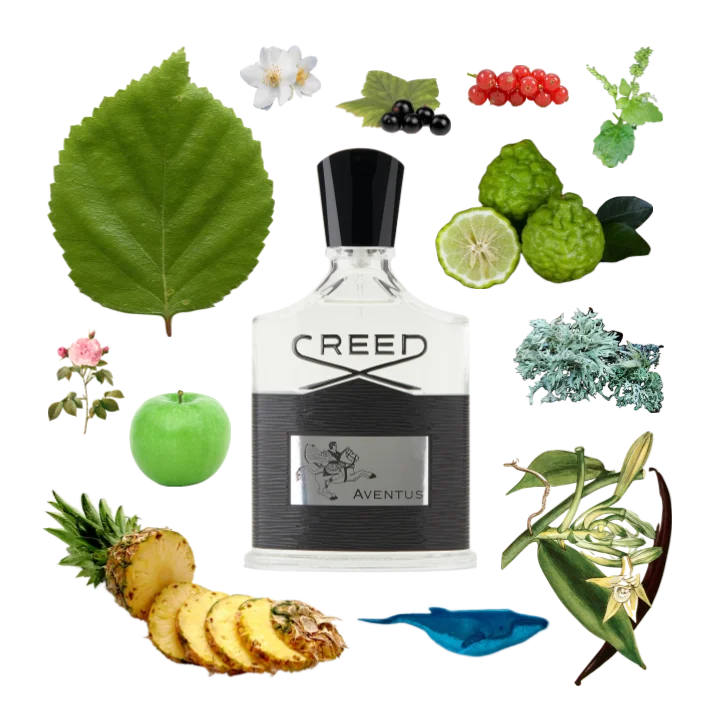
One of the biggest memes of the fragrance world and most coveted releases of the 2010s, Aventus by Creed is beloved by men (and some women) far and wide.
And yet, more than a decade after its initial 2010 release, Aventus seems to be suffering a fragrance’s death by a thousand cuts — that is, discontinuation by a thousand reformulations.
More and more each day, especially in 2022, people are bemoaning the fact that Aventus isn’t what it used to be. The new batches, say most heartbroken Aventus lovers, are a mere shadow of what they used to be.
So yes, I know I’m late to the party. And yes, I acknowledge that this review is limited by the limitations of the 2022 batch of Aventus I got to sniff this week. That I haven’t smelled the original, which was supposedly much better.
But the people looking to try and buy Aventus today probably aren’t scouring eBay for specific batch numbers from ten years ago. They’re most likely going to be buying a new batch. Reading recent reviews of recent reformulations is a necessary thing. The fact that the old one was better won’t save you if you find the new one lacking.
Anyway. To the pomp and circumstance of entirely fictitious royal fanfare, let’s dive right into Aventus by Creed, shall we?
Right away smelling this on the skin I get something sharp. It has an almost black-pepper-like texture in the first instant. It’s traditionally masculine, but not in a brawny way, just in a peppery slightly cologne-y way. We’ve come to expect something peppery from so many men’s fragrance releases, haven’t we? It’s unoriginal and sharp, not sneezy, more like a dark synthetic edge.
I had expected a soft, sweet sort of fruitiness here. But the next thing that hits me is a too-sharp synthetic concentrate of nondescript fruity notes. In a few minutes, this becomes a flash or two of semi-passable pineapple. I’d expected the pineapple to be front-and-center here, but this isn’t so — at least, not on me. It flits through the background, bright and juicy and pleasant enough but never noticeable for long.
What’s louder than the pineapple is something really achingly familiar. It takes me a second to place what it is: a bergamot note that smells JUST like the bergamot essential oil I had and loved in middle school and had dabbed on my sweaters before traveling for mock trial competitions. Sharp and rind-y and sour, this is a real, green, bitter and saddening sort of bergamot.
To me, it’s one of the higlights of Aventus. So often, bergamot is overly polite, juicy, sparkly, even lemon-like. But this is the rind and pith and aching sharp bitterness of real bergamot oil.
Next, something woody develops out of the peppery note. Woody and peppery and almost mentholic, it feels like… pepperwood to me. I know that capital P Pepperwood is a captive molecule owned by Givaudan, so that’s not exactly what this is, but it feels similar. It’s woody… it’s peppery… it’s cool. It’s a cool peppermint-y pepper-y wood.
But, in fact, it’s birch. Sharp, crisp, and masculine, retaining edges that are kind of like black pepper and kind of like cool, fresh candy cane peppermint. Thirty minutes in, the birch accord gets deliciously leathery. I didn’t think I liked leather in perfumes, but I like this. It’s a touch coniferous and deliciously cold, a cool, white, almost-powdery sort of wood tinged with something like menthol and a brown, musky, almost medicinal leather richness.
This is where the smoky notes come in as well. The birch is smoky here and there in places the way a good leather can smell smoky. It’s not at all consistent, but it’s a pleasant dark gray smudge that comes through here and there.
Thirty minutes in, the bergamot fruity accord is already background to the birch, though blended nicely, cohesive and atmospheric. At this point Aventus is leathery, birch-and-pineapple-y, pepperwood-sharp, and in the background there’s something sour and diffuse and musky, at times almost like a sour dairy product, something like kefir.
That aching bergamot sourness is the most impactful part of Aventus on my skin. It most definitely shapes the fragrance more on me than the pineapple does. It’s unapologetic and sad and a little bit tiring with its unending acrid edges.
A few minutes later, a musky cake vanillin comes to the rescue, balancing the sourness with a typical perfume vanilla sweetness. It’s predictable and dull, unoriginal and uninspired, but a nice balance to the pithy, rind-y sour mouthfeel of the rest.
There’s a green fresh juiciness around the pineapple of the opening that might be green apple if you squint, and a dry coolness to it all that I guess could be what perfumers call black currant. But I don’t really pick those notes out clearly.
Otherwise, this is mostly a patchwork of birch texture and bergamot sourness and specks of warm musky vanilla amber. Here and there, the faintest tendril of smoke.
Forty-five to fifty minutes in, the birch is bowing out, leaving touches of pineapple, vanilla, and smoke in its stead.
An hour in, something in the smoke is sometimes suddenly too sweet. The vanilla has become too much, unbalanced by the departure of the bergamot. What’s left is a vague hintof musk and uninspired vanilla too-sweetness, and a fast-fading touch of the peppery birchwood.
Over an hour in, all I get are occasional bergamot, pineapple, and sweet musky vanilla flashes. It’s honestly hard to get a consistent idea of Aventus, since it’s so faint and fading so fast.
Past this point there is the occasional flash of lovely great earthy scent, a pepperminty coniferous sort of birch-patchouli edged with good sweet amber. These are my favorite moments of Aventus, earthy and green, flashing briefly before my eyes about an hour to an hour and a half in.
Two hours in, there is nothing left of Aventus but the faintest hint of pepperwood-like birch. It’s less pepper than in the opening, and more of a soft wood, a bit of earthy and green. In the background, there’s a faint texture of soft musk, with no salt to my nose but a comforting, almost smoky warmth I might believe was something like ambergris.
Honestly, that’s a lie. I’ve smelled good ambergris, even good synthetic ambergris, and this isn’t anything to note. It’s just a vague vanillin sort of amber with hints of smoke.
Aventus is effectively entirely gone at two and a half to three hours. Something in its last traces and on the sprayer of my sample smell almost fishy to me. It’s off-putting. I don’t quite know what it is. Perhaps it’s a very bad ambergris note after all, salty and fishy and also somehow too sweet.
Very, very late in the musky faint sweetness, something turns just a touch powdery and white. Here, I find it especially easy to imagine a few simple twists that would make an excellent Aventus Pour Femme.
(Not that women can’t wear regular Aventus. I’m a woman wearing regular Aventus. But I can really easily see where Creed could turn up the fruitiness and powder and make a more traditionally feminine scent, which, indeed, they seem to have done in Aventus for Her.)
The Creed website also lists apple, pink berries, and jasmine as ingredients in Aventus, while other sources list rose. And, supposedly, there’s oakmoss in the base here somewhere. Allegedly.
I frankly don’t get any of these things in here. Maybe that sharp, crisp, incredibly synthetic harsh fruity note in the first minutes of the opening is supposed to be some sort of green apple. I’m honestly just grasping at straws here, though, because nothing there was convincingly apple-like.
(If you like apple in a masculine fragrance, the tart green apple opening of Perry Man by Perry Ellis is masterful and is one of my very favorite apple notes. Even the cliche blue freshie apple note in Y Eau de Parfum by Yves Saint Laurent is more pleasant than the screeching juiciness in the first minutes of Aventus.)
I don’t even know where those other things might be, though. Jasmine? Rose? Red berries? (What are those, anyway?) I certainly don’t pick up any of these notes, and I haven’t come across any reviews by people who have.
And so… that’s it. Two to three hours in, Aventus is just about gone. Throughout the next couple hours I might get the occasional faintest whiff of birch, probably where it clung to my clothes by accident, but that’s it. A paltry two hours. Maybe three. Maybe.
For all the grandiosity and reverence surrounding the famous Creed concoction, I’ll admit I’m a bit miffed. This is the product fuelling some 50% of Creed’s sales at least? This?
I mean, it’s nice, but that’s some of the worst performance and longevity I’ve ever seen.
I’d believe that this was novel when it came out in 2010 and much better to boot. But in its current condition? Aventus by Creed is a scam, a sham, and an incredibly silly investment.
One thing I’m wondering is… why?
Most of us are familiar with the heartbreak of our favorite scents getting reformulated beyond recognition and inevitably discontinued.
Most of the time there are two driving forces behind this process: marketing focus groups and the IFRA.
Numerous beloved perfumes have undergone reformulations and tweaks over the years that strive to make them just a bit more mass-appealing, palatable, trendy. You can’t completely change a perfume’s formula after you’ve released it, but you can try to tweak it to appeal to more people if the initial reception isn’t what you’d hoped. And so, as times go on, scents get subtly reformulated to be sweeter, softer, more vanillic, closer to the trends of the day.
I’d call this the weaker of the two forces. Fragrance houses keep making both subtle reformulations and outright re-releases of perfumes trying to tweak them towards something more easily enjoyed by the masses, but it’s not the force we hear more about.
The stronger of the two? The International Fragrance Assocation (IFRA), as well as any major bodies that routinely ban fragrance materials, such as the European Union (EU).
The IFRA, in particular, has faced ire and wrath over the years from the fragrance community for their habit of banning just about every natural material known to man on the off chance it might cause a rash or minor allergic reaction. Instead, perfumers are forced to adapt and use hodgepodge manmade imitations of those materials, which are often weaker, less rich, more difficult to blend neatly, and generally considered to be of a lower quality.
(The ironic thing is that essential oils, extracts, and absolutes that have been used by humans for thousands of years are being banned due to safety concerns and are being replaced by brand new man-made aromachemicals whose long-term effects on health and safety have not been studied at all.)
So, when a famous perfume with an ingredient like oakmoss goes under a mjor reformulation, for instance, it’s clearly an adjustment in order to comply with IFRA standards (namely, banning oakmoss in case a few people might be allergic to it).
While I’m on this soap box, wouldn’t it be infinitely better to require clear labelling of all fragrance materials in a product, so that shoppers can be informed and avoid the ingredients they might be allergic to? Fragrance allergies aren’t generally life-threatening, more like a rash or a runny nose. I really don’t think it would be the end of the world if a few people found out the hard way that oakmoss-heavy perfumes, for instance, make their skin turn pink.
Now, however, the pernicious word “fragrance” in ingredient lists obfuscates so many materials that it’s hard for people who know they have a fragrance allergy to shop for scents that won’t irritate them. I resently read a thread on BaseNotes, for instance, from a husband searching for perfumes for his wife who is allergic to balsam of Peru, expressing frustration that most of the time the note hides behind the word “fragrance” in ingredient lists and it’s quite difficult to figure out whether or not it’s actually in a product.
Anyway.
In the case of Aventus by Creed, its reformulation history does not suggest a reaction to any significant IFRA bans. I’m not a Creed historian by any means (can somebody please ask Gabe Oppenheim about this?) but nothing I’ve read or observed suggests that Aventus has been worsened over time due to the ban of any key ingredient.
As far as fragraces go, synthetic fruity and woody notes are among the easier scents to imbue with good longevity. This isn’t exactly an ephemeral citrus spray or faint green scent or incredibly fragile floral.
It isn’t Comme des Garçons’ Sherbet Series 5: Rhubarb, which lasted maybe an hour or two but at least had the excuse of being a naturals-based scent constructed around the incredibly fragile rhubarb note.
No, Aventus joins Maison Martin Margiela’s Soul of the Forest in my “there is no reason for this basic woody Eau de Parfum to perform as poorly as it does” book.
That’s right. Reader. This is an Eau de Parfum. and it lasts a paltry two to three hours, if that.
The fact that Aventus had lasted a decent amount of time when it came out makes sense, and is to be expected of a cologne that is mostly artificial pineapple and leathery birch. Woody notes are generally some of the longest-lasting out there.
I’ll admit I have a bit of a burgeoning negative bias against the house of Creed. Scholarship suggests the brand and its history are mired in lies. (I haven’t read The Ghost Perfumer by Gabe Oppenheim yet, but it’s on my to-read list and I’ll absolutely write up a book review when I do.)
Putting that aside, I just haven’t been impressed by anything I’ve seen released by the house, particularly not at their egregiously expensive price point. Mentally, I group Creed in with other houses (like Parfums de Marly and Kilian) I think of as giant designer fronts that are trying to market themselves as niche and rachet up their prices accordingly when their scents are unoriginal designer copies at best.
Essentially, it’s an industry plant. A giant, well-positioned fragrance brand that employs mainstream perfumers and makes mainstream scents, but tries to market themselves as exclusive and niche just to charge you five to ten times what their product is worth.
So my dislike of Creed might be coloring in my suspicions here, but it’s really hard to determine a reason for them to reformulate their bestseller into incredibly weak toilet water except to make it even cheaper to mass-produce.
After all, I imagine the reasoning goes, Aventus has already secured its place as one of the most coveted and iconic men’s fragrance releases of the century. Why bother with continuing to provide a good product when you have an avalanche of reviewers and YouTubers and Jeremy Fragrances already vouching for you?
But that’s just my opinion. It could very well be that Creed had good reason to turn Aventus into the LaCroix of men’s fragance. But this is so weakly scented that it’s like someone was thinking about pineapple and birch in the next room over from a vat of perfumer’s alcohol and then they bottled that up and sold it.
And rumors say it used to last all day. That sort of night-and-day change doesn’t happen by accident, and I haven’t really seen any good reasons for it put forth by reviewers or the brand itself.
Also, apparently in 2020 Creed was bought by BlackRock? You know, the multi-national investment company? Why?
As if things weren’t corporate and soulless enough at the top to begin with, the owners of Creed are no longer people who even pretend to have an inkling of interest in fragrance or fashion. Conventional wisdom says that being bought by someone like BlackRock predicts further shifts towards mass appeal and lowering production prices, and it looks like that may have come true.
All in all, Aventus smells fine, but it’s the most egregious example I’ve seen of selling brand name and nothing else for a colossal price tag. A bottle of the stuff costs almost $500. Five hundred U.S. dollars. For a simplistic fruity-woody scent that’s gone in two to three hours.
Sure, pineapple and birch are interesting and underutilized ingredients. It’s a nice scent profile. But there have to be lots of people out there doing pineapple and birch better — or, at the very least, cheaper.
I’m currently visiting family for Christmas and I’d packed a set of samples for my little brother to sniff. I included Aventus and sampled it myself on my bus ride home (It made for a much safer polite bus ride choice than Amouage’s Journey Woman, an incredibly loud sweet number I wore going home for Thanksgiving.)
But now, I’m not even sure that I want him to try it. I’ll still let him have a sniff, of course, but I don’t want to risk the chance of inspiring an incredibly expensive Aventus habit when it lasts two hours and there are simply so many better men’s fragrances out there.
I am glad I tried it, though. Aventus is an iconic fragrance that’s really had an impact on the 2010s men’s perfume and cologne scene.
I tried Aventus to be culturally informed, the same way you unenthusiastically watch the latest Marvel movie or whatever just to keep abreast with what’s going on. If you’re curious, I do recommend trying a sample just for the informative cultural experience. I learned that I really like birch, that I’m not as opposed to leathery scents as I once thought, that dry, realistic rind-y bergamot oils do exist in the world of perfumery, and that pineapple is a pretty fun fruity note.
If you find the profile of Aventus really striking, especially if the bergamot note is as impressive to you as it is to me, do yourself a favor and buy yourself some bergamot essential oil. It’s a lovely scent, and really shapes a lot of the broad overarching contours of Aventus more than bergamot often does.
Otherwise? If you really like the scent profile of Aventus, you might want to consider looking into a cheaper and longer-lasting alternative.
Yes, I know I was just complaining about fragrance dupe companies yesterday. But whether unofficial corporate ripoff or flat-out fake, you might genuinely find something better that smells roughly like this by exploring all options.
Hell, the simplistic profile honestly makes me want to dupe Aventus myself. Bergamot essential oil, some sort of pineapple aromachemical, birch wood, and a little bit of musky vanillin. Four ingredients, and you have the broad strokes of it.
Can’t imagine it’s expensive to produce. Sure is expensive to buy, though.
If this review hasn’t turned you off Aventus, I encourage you to at least try a sample before investing in an outrageously expensive bottle of the stuff. I’ve listed some sample suppliers that carry it below.
In summary: decent pineapple-bergamot-vanilla-birch scent. Unique — at least, it was when it first came out — but far from revolutionary. A fun idea from noses Jean-Christophe Herault and Erwin Creed whose hype promptly spun way out of control, landsliding from decent product to emperor’s new clothes. Outrageously expensive. Lasts two hours. Scammy enterprise that’s more about selling brand name than quality. Smells nice, but there are better options.
Where to Find Aventus Eau de Parfum by Creed
You can find samples and decants of Aventus EdP at Scent Decant, Scent Split, and MicroPerfumes.
It’s also available on ScentBird, a monthly fragrance decant service.
Want more? You can find full bottles at Scent Decant, HottPerfume, Scent Split, The Perfume Spot, Jomashop, StrawberryNet, and MicroPerfumes.
These are affiliate links. If you click on them and buy something, the seller pays me a commission, at no extra cost to you. You can learn more about them here.
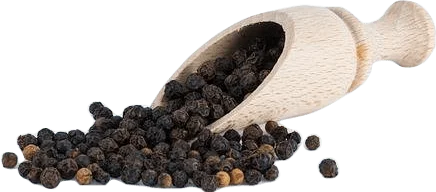







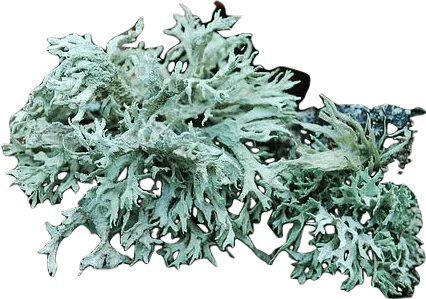



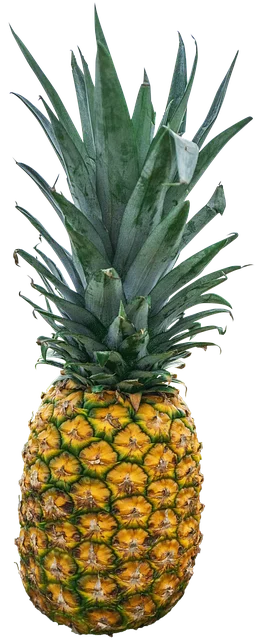





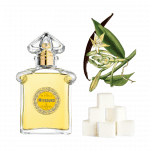


One thought on “Aventus Eau de Parfum by Creed Review”